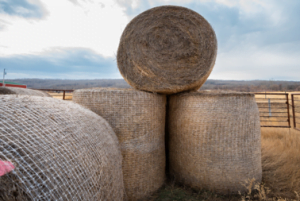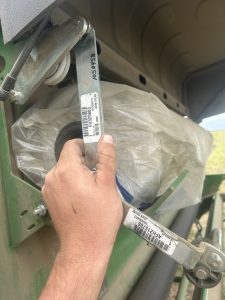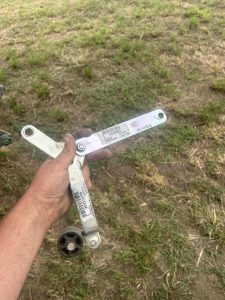Our net wrap is made out of biopolymers that are sourced from plant based renewable resources.
On our ranch in Alberta, Canada our net wrap has maintained structural integrity for over 12 months. We are currently testing our net wrap through out various regions and climatic zones in North America.
We currently recommend 2 ¼ wraps for hay and 3 ¼ wraps for straw and other forages.
Our test results indicate water and sunlight have minimal impact on our net wrap.
For up to 12 months farmers and ranchers can stack their bales however they normally do. For storage over 12 months we recommend stacking the bottom row of bales on end on the ground. The bales stacked on top should be on their side (net wrap side down). This is referred to as “mushroom stacking” as shown in the picture.

There are no modifications required for Case IH / New Holland Balers. Initial indications are no modifications are required for other makes of balers however further testing is ongoing in 2024. Many models of John Deere, AGCO, Vermeer, and Kubota balers have run our net wrap over the last 2 years.
Case IH / New Holland balers:
- The two settings to focus on are the duckbill and tension.
- Duckbill Setting and Tension combination’s we have found worked well together so far.
- Duckbill Setting #1 – Tension set to 70-75 lbs (Pull Test)
- Duckbill Setting #2 – Tension set to 90-95 lbs (Pull Test)
- Duckbill Setting #3 – Start tension low and slowly increase to find correct tension
- Please call us if you have any questions or need help troubleshooting.
John Deere balers:
- For John Deere 560, 561, 568 and 569 balers we recommend removing both the left & right tension arms (pictured). By doing this it has helped set the correct tension without making other changes.
- Please call us if you have any questions or need help troubleshooting.


Studies are ongoing. We recommend removing our net wrap prior to mixing rations or directly ring/feeding livestock.
Our net wrap is manufactured in the USA.
